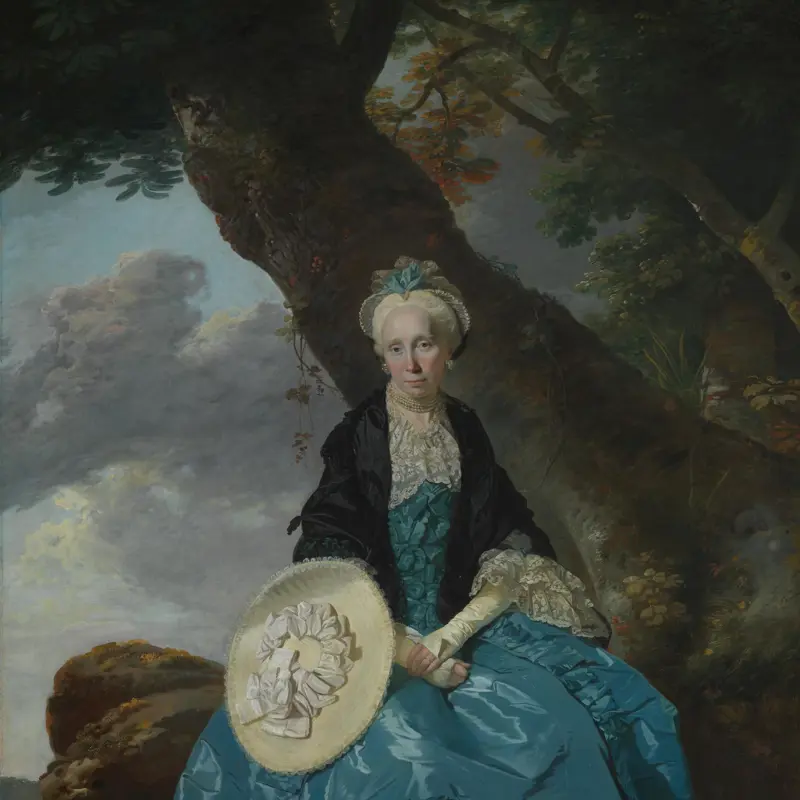Mary Oswald was probably born in Kingston, Jamaica, the only child of Alexander Ramsay (UCL Department of History, ‘Alexander Ramsay’, in UCL Department of History (ed.), Legacies of British Slave-ownership [online], London 2020, <https://www.ucl.ac.uk/lbs/person/view/2146660479> accessed 28 June 2021), a Glasgow-born merchant who settled in Jamaica, acquiring plantations there and in the South American colonies. On her father’s death she returned to Britain with her mother, leaving the estates in the hands of trustees. Mary not only succeeded to her father’s estates, but also to those of her two uncles. Much of her considerable wealth was gained through enslavement.
In around 1763–4 Johann Zoffany painted her portrait, which was probably commissioned to hang in the Oswald’s Scottish house designed by the architect Robert Adam, on their estate of Auchincruive, three miles from Ayr. In 1938 it was purchased by the Gallery.
In November 1750 Mary married Richard Oswald (1705?–1784) (UCL Department of History, ‘Richard Oswald’, in UCL Department of History (ed.), Legacies of British Slave-ownership [online], London 2020, <https://www.ucl.ac.uk/lbs/person/view/2146662547> accessed 28 June 2021), a Scottish entrepreneur, merchant, shipowner and slave trader. In 1746 he established himself as a merchant in London, trading initially in tobacco. He owned estates and enslaved people in East Florida, Georgia, Virginia and the Caribbean. In addition, in 1748, he and others purchased Bance Island, on the Sierra Leone River, which they established as a station for the trafficking of captured African people. In 1782 Oswald also negotiated the peace treaty (the Peace of Paris) that concluded the American War of Independence. Her will, as Mary Oswald or Ramsay of Auchincruive, proved on 19 December 1788, deals in detail with both the settlement by her husband and her own property, but does not mention her slave-property in Jamaica. It is important to note with regard to this that it is common for Scottish wills not to do so; not infrequently, non-UK based properties were separately inventoried.

